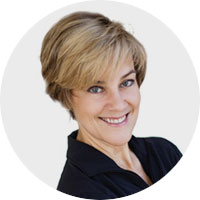Get Easy Health Digest™ in your inbox and don’t miss a thing when you subscribe today. Plus, get the free bonus report, Mother Nature’s Tips, Tricks and Remedies for Cholesterol, Blood Pressure & Blood Sugar as my way of saying welcome to the community!
10 pro tips to make any workout count

- Wait an hour after you rise to exercise to protect the discs of your spine. Discs plump overnight. The added pressure of exercise would make that first hour the most risky time to exercise. This is true regardless of fitness level. Enjoy a second cup before you take that run… or follow this morning strategy that works for me.
- Do have a snack before exercise. A small snack with protein and fat will boost energy during your workout and keep you from crashing or being distracted with hunger. Though there is a lot of talk about burning more fat if you exercise fasted, you’ll spend the most energy if you feel good. More energy spent will equate to more fat burned. But if you choose protein powder, choose wisely.
- Don’t skip your warm up. The longer and slower you warm up, the more oxygen you’ll get pumping to your muscles during your exercise session. You’ll not only be more comfortable but potentially you’ll spend more energy. Energy expenditure is tied to oxygen consumed during and after exercise.
- Plan your highest intensity exercise early and do more calming walks or yoga later in the day. Short intervals or weight training sessions in the morning can boost your metabolism all day, especially if you’re fighting stress or a hormone imbalance, without keeping you up at night.
- Reach fatigue. Whether you go light on weight training or you can safely go heavier, you must reach fatigue to see the most development in lean muscle and in bone density that can help protect you from the crippling danger of sarcopenia as you age. You’ll know you’ve hit fatigue when you can’t quite complete your last repetition with good form.
- Train fresh, not in a fatigued state. At first glance this may seem to contradict tip #5. To clarify, you always want to spend more time training with perfect form, not just more time training. If you have a history of low back pain for instance, you need to spend a lot of time training with perfect technique in non-fatigued states. You may want to do your core work in short sessions throughout the day instead of one long session after your cardio.
- Add single-leg lower body work to your routine. It can be much more spine-friendly than bilateral (two-legged) work. Simply going to a split-stance on other exercises can be helpful for minimizing unwanted spine movement, too.
- Bigger muscles matter most in metabolism. Focus first on lower body exercises that you can safely do. Squats and lunges are great if you can tolerate the weight bearing. If your knees or hips complain, try bridges and hamstring curls with a ball. Then add a push exercise and a pull exercise each for your upper body. On those busy days, this might be it. Because each of those three exercises uses many muscles, you’re covered.
- Cool down like it’s your job! Stretch those muscles and do 5 minutes of light cardio before you finish and you’ll make your next workout better even before you’re done. The faster you recover, the faster you can do another high-quality session. Do everything you can to facilitate better recovery. That includes proper nutrition (see the next point!) and good sleep.
- Plan a high protein meal 60-90 minutes after moderate to vigorous exercise when your muscles are ripe for repair and rebuilding. Studies show older adults don’t synthesize protein as well as younger adults. A higher amount of protein consumed post-exercise will help you keep the lean tissue you’re working so hard to create and spare muscle losses that can occur with age or following exercise breakdown.












